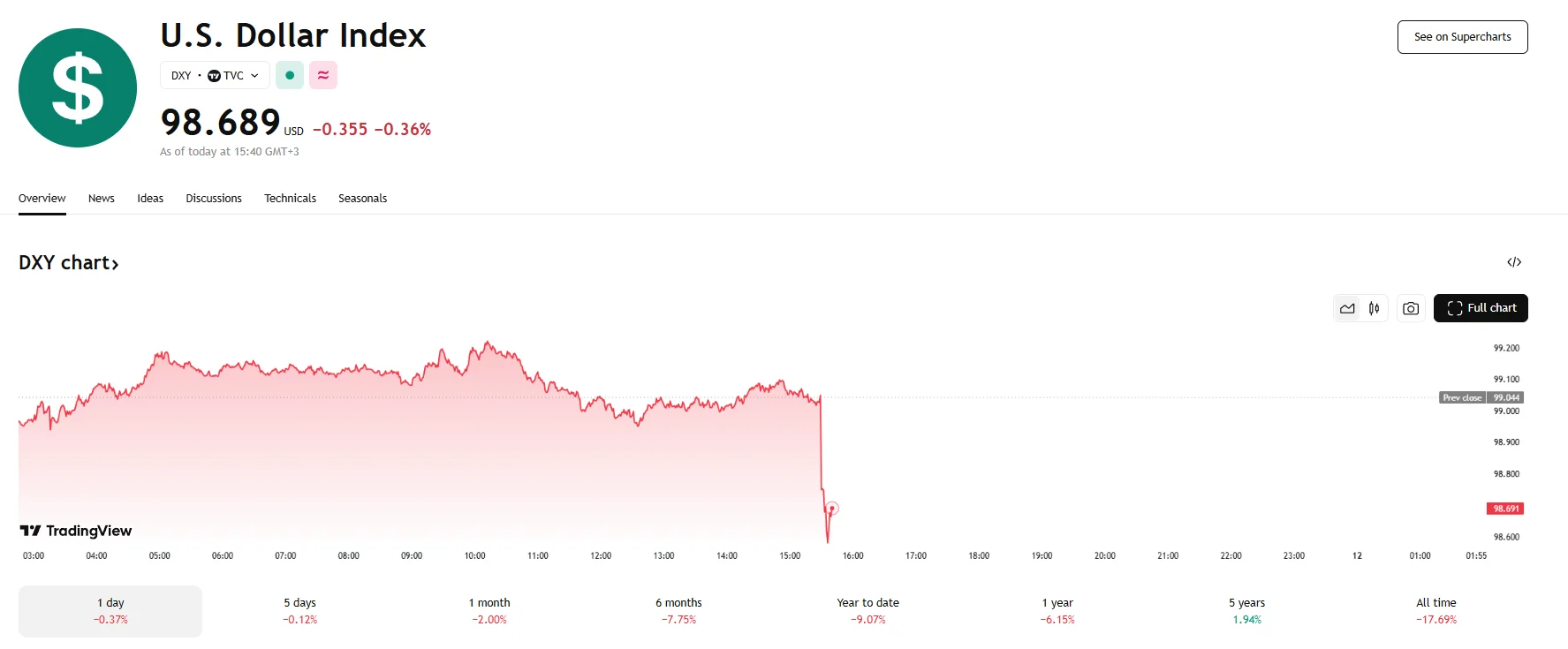US Inflation Rises to 2.4%, Dollar Index Sinks Below 99.00 US Inflation Rises to 2.4%, Dollar Index Sinks Below 99.00
Key Moments:The US CPI advanced to 2.4% in May.Core consumer prices ticked 2.8% upward year-on-year through May, mirroring April’s climb.The Bureau of Labor Statistics faces staffing shortages and hal
Key Moments:
- The US CPI advanced to 2.4% in May.
- Core consumer prices ticked 2.8% upward year-on-year through May, mirroring April’s climb.
- The Bureau of Labor Statistics faces staffing shortages and halted CPI data collection in several cities.
Price Growth Slows in Latest Data, Greenback Weakens
US consumer prices saw a modest increase in May, a rise tempered by lower gasoline expenses. According to the latest report from the Labor Department’s Bureau of Labor Statistics (BLS), the Consumer Price Index (CPI) crept up by 0.1% last month, down from a 0.2% gain in April. On an annual basis, prices increased 2.4%, an acceleration from April’s 2.3%.
Today’s results also exerted pressure on the greenback, which resulted in the US Dollar Index dropping 0.36% and slipping from the 99.00 mark.

According to current forecasts, the Federal Reserve is unlikely to adjust its current federal funds rate range of 4.25% to 4.50% during next week’s meeting. Instead, officials are expected to maintain their cautious stance while assessing the broader economic consequences of the latest trade policies.
Core Inflation Holds Steady
The core CPI, which excludes core CPI, advanced 0.1% in May. This also marked a deceleration from the 0.2% gain reported in April. On a yearly basis, core inflation held steady at 2.8%.
Despite the subdued pace in the latest data, analysts are bracing for stronger inflation readings later in the year, citing knock-on effects from the Trump administration’s import tariffs. While the impact on pricing has been limited thus far, this can be attributed to the presence of stock accumulated prior to the levies’ implementation. With this in mind, major retailers like Walmart have already warned that the company will soon proceed with price hikes.
Data Collection Under Pressure
Concerns are mounting over the ability of the BLS to maintain the robustness of future economic releases. The agency recently halted CPI data collection in three cities.
This development comes amid sweeping changes to government operations that have resulted in notable staff reductions in an effort to reduce the size of federal agencies. In an additional blow to data continuity, the BLS has announced it will stop issuing approximately 350 indexes related to the Producer Price Index (PPI), including industry, specialized classifications, and commodities, starting with the PPI data to be released in August.
Disclaimer: The views in this article are from the original Creator and do not represent the views or position of Hawk Insight. The content of the article is for reference, communication and learning only, and does not constitute investment advice. If it involves copyright issues, please contact us for deletion.